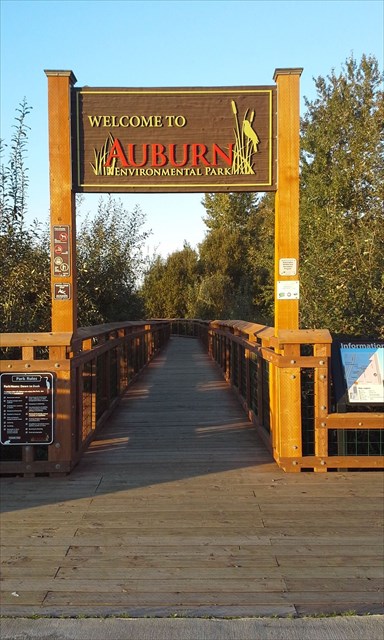This geocache is placed with the gracious approval and permission of the Auburn Parks, Arts and Recreation Department.
Do not leave the trail (boardwalk). Leaving the trail to find this geocache would not only damage the wetland but would make it impossible to get. After hanging out at the cache site and watching people search for the first hour after it was published I realized it was harder than I thought, especially since people didn't trust the coordinates and wandered off 20, even 30, feet away saying 'it must be over there', so I upped the difficulty from 2.5 to 4.0. Any comments received will be considered. There is a small parking lot at the north end of the boardwalk, 1/2 block east of the cache and 1/4 mile north on Western Ave at N 47° 18.648 W 122° 14.609.
The boardwalk of the Auburn Environmental Park (AEP) provides a close up look at restoration of a wetland ecosystem. The AEP is an innovative project to create a significant open space to promote wetland ecosystem restoration, fish and wildlife enhancement, water quality improvement, flood control, and public education and recreation.
This geocache is wheelchair accessible but has a 1.5 terrain rating because parking is not close.
You are looking for a PVC pipe.

Wetland Hydrology is a process where water makes an extended pitstop in the wetland. Sometimes this is seen as standing water - but not always. Even if the wetland looks dry, it may still have wetland hydrology as long as the top 12" below the surface is saturated for several weeks during the year. Certain plants are adapted to grow in water and periodically wet, oxygen deficient soil. Some of the plants that grow in wetlands include common duckweed (example of a floating plant), cattails (an emergent plant - grows in water or muddy bottom), black cottonwood trees, and scouler's willow (a woody wetland plant)
